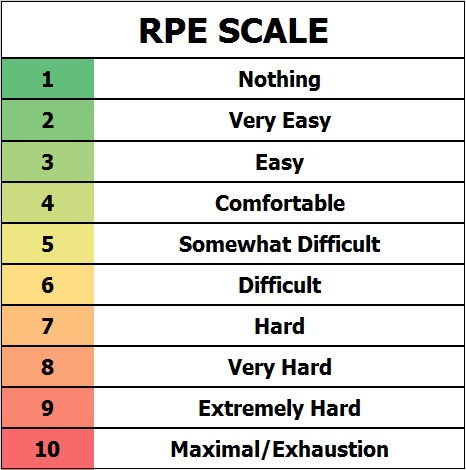Maximizing Progress: The Power of a 30-Minute Time Trial for New Runners
- Dayna Player Robinson

- Aug 28, 2023
- 4 min read

Maximizing Progress:
The Power of a 30-Minute Time Trial
for New Runners
Embarking on a journey to complete your first race as a new runner is an exciting and rewarding experience. To ensure that you're well-prepared and making the most of your training, incorporating a 30-minute time trial into your regimen can be a game-changer. This simple yet effective tool not only helps you gauge your progress but also guides necessary adjustments to your training plan.
In this blog post, we'll delve into the benefits of a 30-minute time trial, how to execute it, and how to interpret the results to optimize your training zones.
The Power of the 30-Minute Time Trial
A 30-minute time trial is a controlled effort where you run as far as you can within 30 minutes. It serves two primary purposes for new runners:
Progress Assessment: When you're training for your first race, tracking your progress is crucial. Running a 30-minute time trial at the beginning and throughout your training plan helps you measure how your fitness and speed are improving over time. This tangible evidence of progress can be incredibly motivating, especially during those times when you might doubt your abilities.
Adjustment Guidance: Midway through your training plan, a 30-minute time trial can help identify the effectiveness of your current training regimen. If you're making sufficient progress, you'll see an increase in the distance covered within the time frame. On the other hand, if you're not seeing the desired improvement, the time trial can signal the need for adjustments in your training routine.
Executing the 30-Minute Time Trial
Here's a step-by-step guide on how to conduct a 30-minute time trial:
Warm-Up: Begin with a thorough warm-up consisting of light jogging, dynamic stretches, and mobility exercises. This preps your muscles and joints for the intense effort. Find our go-to warm-up here.
Choose a Flat Route: Opt for a route that's relatively flat and familiar to you. This minimizes variations in terrain that could affect your performance. A treadmill might be a great option. If using a treadmill keep the elevation at 1% as this has been shown to be closely associated to actual ground running conditions when testing endurance-trained athletes.
RPE Scale: Use the Rate of Perceived Exertion (RPE) scale to gauge your effort on a scale of 1 to 10. At the start, you should be around 5-6 on the RPE scale, comfortably challenging but sustainable.

4. Consistent Pace: Start at a steady pace that you believe you can maintain for 30 minutes. Avoid starting too fast, as it can lead to burnout before the time is up.
5. Monitor Pace: Keep track of your pace using a running watch or smartphone app. Adjust your effort as needed to maintain a consistent pace throughout the 30 minutes. It would be a good idea to track your pace, heart rate (HR), and RPE every 5 minutes.
Minutes | RPE | HR | Pace |
5 | | | |
10 | | | |
15 | | | |
20 | | | |
25 | | | |
30 | | | |
6. Final Push: In the last few minutes, if you have energy left, gradually increase your effort to finish strong.
7. Cool Down: After the 30 minutes are up, slow down to a walk and perform static stretches to aid in recovery.
Interpreting the Results for Training Zones
Once you've completed the 30-minute time trial, it's time to interpret the results and use them to refine your training zones:
Distance Covered: Measure the distance you've covered in the 30-minute time trial. This will serve as a benchmark for future assessments.
RPE Assessment: Reflect on your perceived effort during the trial. This subjective measure helps you understand how hard you were working.
HR Assessment: Reflecting on your HR during the trail will also help you assess your current fitness level.
*Training Zones: Based on your time trial results, you can establish different training zones. These zones guide your training intensity and help you strike a balance between pushing yourself and avoiding burnout.
Zone 1: Recovery (RPE 1-2)
Zone 2: Endurance (RPE 3-4)
Zone 3: Tempo (RPE 5-6)
Zone 4: Threshold (RPE 7-8)
Zone 5: Max Effort (RPE 9-10)
Using these zones, you can tailor your workouts to specific intensities, ensuring that you're training both efficiently and effectively.
* Other sources may list these a little different. Do what is best for you are your training plan/goals.
In conclusion, a 30-minute time trial is an invaluable tool for new runners preparing for their first race. It provides a tangible measure of progress and insight into necessary adjustments, enhancing the effectiveness of your training plan. By understanding the RPE scale and utilizing the time trial results to establish training zones, you'll set yourself up for a successful and fulfilling running journey.
Remember, every step forward, no matter how small, is a step toward your ultimate goal.
Happy running!
Want more help to Get Running? Join our well-rounded training program, Get Running Program has an easy design to help you: just push play and follow along!
Want more help?
Join our Running Workshop here!
Or
Learn how you can run more efficiently Running Assessment
Or
Get your FREE Strength Assessment here!
Or
Join our online 12-week strength program here!





Comments